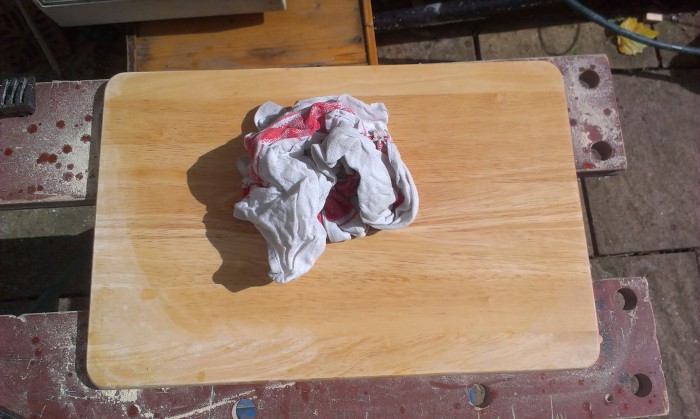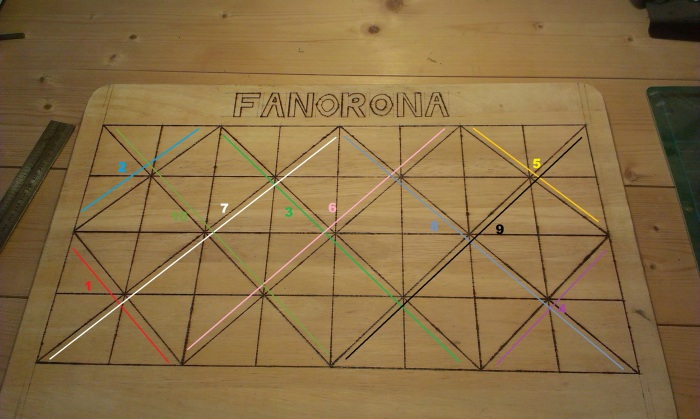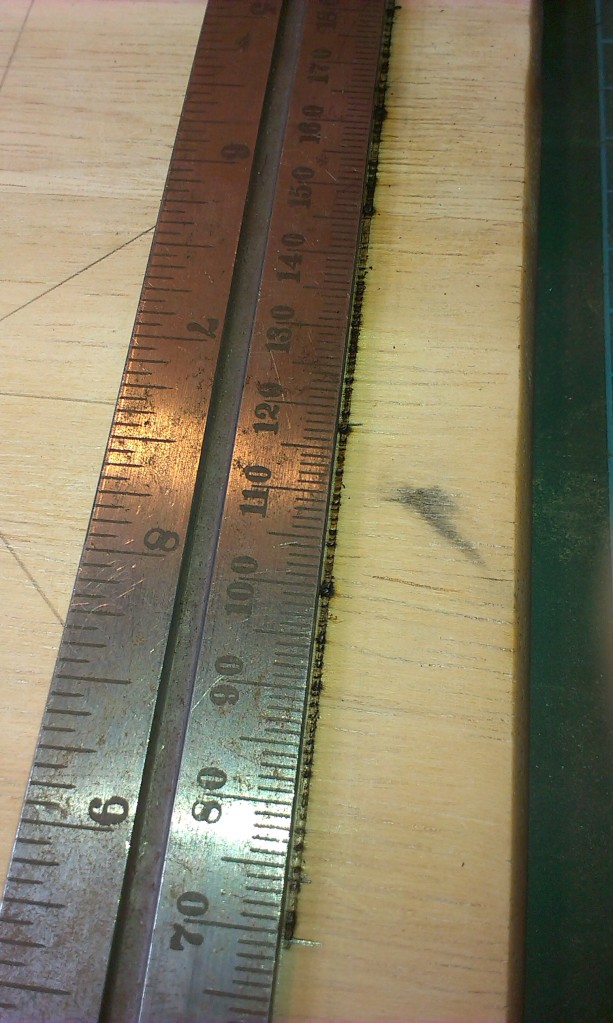Number of Players: 2
Year of Publication: Unknown
Creator(s): Unknown
The most important question you must consider when playing any Morris game, is who was Morris? Now considering it dates back to… God knows when and God knows where, this could be very hard to discover and for more information on this one should view our earlier post here! I like to think Morris was a man who discovered this game while playing Tic Tac Toe drunk…Or high on opium, maybe? If it was first played in China? but I’ll let you formulate your own ideas!
Without Further Ado:
My Twelve and Three Mens Morris Board:

I made this myself in the same way I made (and on the back of) my Fanorona board which you can see here and also see the technique for making one.
Why did I make my own I hear you ask? Well I’ll let Ron Swanson form the show Parks and Recreation explain:
(this video will start at the relevant quote but watch the whole thing for the full effect)
Aside from that, versions are expensive and difficult to come by. So when you have a piece of wood, the tools and the know-how, just make one!
Three Men’s Morris:
Now there are different versions of Three Men’s Morris but one of them is exactly the same as Tic Tac Toe, So I made the one that wasn’t (for obvious reasons). Quite possibly the shortest game I have ever played taking literally about a minute to play (like Tic Tac Toe) and coming to an immediate win, lose or draw! However even the version I created, which lacked the diagonals of Tic Tac Toe could still just as easily by played on paper because there is no movement phase like in Nine and Twelve Men’s Morris. So is it worth spending an hour branding a game board for it? Probably not, just variate your games of Tic Tac Toe every once in a while.

Twelve Men’s Morris:
This is a game that is much more complex and I’me much happier I went to the effort to make a board for it. With all of the aspects of Nine Men’s Morris but even more to think about (as you have more pieces and diagonals to consider) it can be a quite challenging game. It is played exactly the same as the Nine Men version but with Twelve pieces and a board with diagonals on it. So, you could just draw diagonals onto your Nine Men’s board, or even imagine them! But why do that when you can spend hours with a soldering iron?

I would recommend anyone who’s a fan of Nine Men’s Morris to give this ago or even a fan of Chess or Droughts. Additionally if you don’t want to buy a physically version HERE is a website where you can play all the different versions of all the Morris games either against a computer or a human. Or if you want an excuse to buy a video game under the premise that it has some educational value or at least some strategic thinking value the Morris game in various forms can be found in both Assassins Creed III and Assassins Creed IV: Black Flag so buy them now!
On Another Note – Breach The Keep:
To anyone who cares we ordered the first real print of our very own board game Breach The Keep which you can find more information on here. Hopefully they’re going to look great, they’re being printed in the US and shipped to the UK (because for some insane reason that’s cheaper than just printing them in the UK. So expect pictures and an update on the free games give away some time soon. If all goes to plan the game should be ready to go in less than two months!
…
But we all know life never goes to plan.
Additionally we’re also planning a video blog to go alongside/be part of this blog. We’re just contemplating structure and formatting and getting hold of equipment etc. But that could happen anytime soon so keep an eye out for that too!















